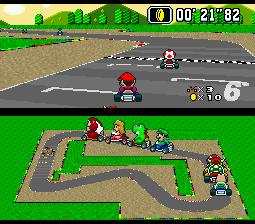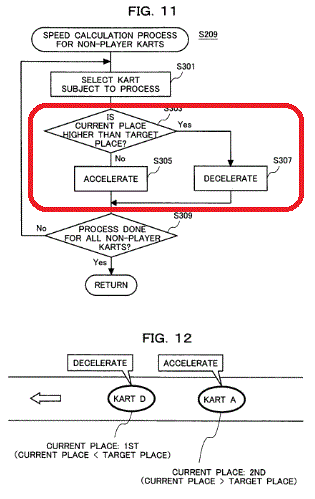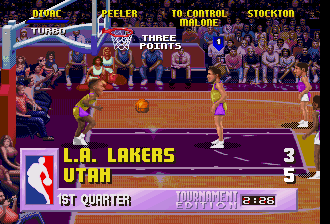Rubber Band AI
Rubber band AI is often known as a poorer implementation of "dynamic game difficulty balancing", which means to dynamically (ie. during the game) adjust the gameplay to be harder if it is too easy, or simpler if it is too hard. This is to try and keep the game competitive, and to equally be neither too boring nor too frustrating. Known as the rubber band effect due to the fact that no matter how far ahead you get, your opponents will (inevitably) catch you up, effectively like there is a rubber band connecting them to you (and as the band stretches..)
Mario Kart
The concept of rubber banding is famously made popular by this game, the patent of which can be read here:

Old Basketball Games
The principle can take on different names such as Comeback Code or CPU Assistance, as was the case in old basketball games, which allowed the user to toggle the rubber banding on or off:
Advantages of Rubber Band AI:
- keeps gameplay close if you are dominating
- can help you if you fall behind get back into the contest
- when matched to an appropriate difficulty setting, it can keep the game balanced without overtly feeling the rubber band effect
- rubber band AI is relatively simple to implement (as a game developer)
Disadvantages of Rubber Band AI:
- ultimately, the player is punished for being excellent or rewarded for being unskilled
- appears unnatural in-game. For example, a car shouldn't slow down for no apparent reason, nor should a digitally represented player's skills become progressively worse. Additionally, the computer can appear to "cheat" by being given an unnatural boost.
- predictably will end in frustration once a player learns to play a game well
- there are more natural ways available (though more technical) to dynamically balance a game's difficulty